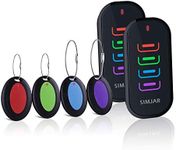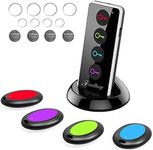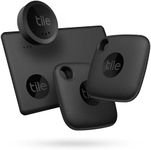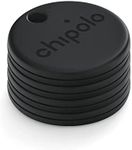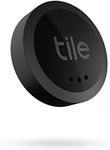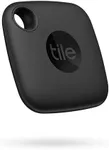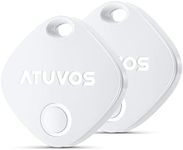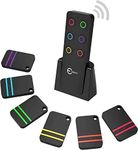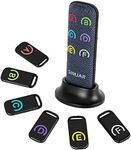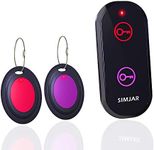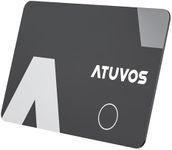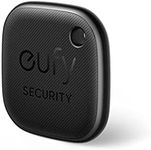Buying Guide for the Best Key Finders
Key finders are small devices designed to help you locate misplaced items like keys, wallets, or bags. They work by attaching to your belongings and connecting to your smartphone or another device, allowing you to track or ring them when lost. When choosing a key finder, it's important to consider how you'll use it—whether you need it for home, travel, or even for multiple items. Think about your daily habits and the environments where you tend to misplace things, as this will help you prioritize which features matter most for your needs.RangeRange refers to the maximum distance at which the key finder can communicate with your phone or tracking device. This is important because it determines how far away you can be and still locate your item. Ranges typically fall into three segments: short (up to 50 feet), medium (50-150 feet), and long (over 150 feet). If you mostly lose things around the house, a short or medium range may be enough. If you often misplace items in larger spaces like offices or outdoors, a longer range will be more useful.
Battery LifeBattery life indicates how long the key finder will work before needing a new battery or a recharge. This is important because frequent battery changes can be inconvenient. Some key finders use replaceable coin batteries that last several months to a year, while others have rechargeable batteries that may need charging every few weeks. If you prefer low maintenance, look for longer battery life. If you don't mind charging, a rechargeable option might be fine, especially if you use the device often.
Alert VolumeAlert volume is how loud the key finder sounds when you trigger it to help you locate your item. This matters if you often lose things in noisy environments or under piles of stuff. Volumes can be quiet (under 80 dB), moderate (80-100 dB), or loud (over 100 dB). If you need to hear the alert from another room or through thick cushions, a louder volume is better. If you only need it in quiet places, a moderate or quiet alert may be enough.
App CompatibilityApp compatibility means which smartphones or devices can connect to the key finder. Most work with iOS and Android, but some may only support one or have limited features on certain platforms. This is important because you want to make sure the key finder works smoothly with your phone. Always check if your phone's operating system is supported and if the app offers the features you need, like location history or community finding.
Size and DesignSize and design refer to how big the key finder is and how it looks. This matters because you want something that fits comfortably on your keychain or inside your wallet without being bulky. Key finders come in small, medium, and large sizes. If you want something discreet, go for a smaller, thinner design. If you don't mind a bit more bulk for extra features or battery life, a larger one might be suitable.
Water ResistanceWater resistance tells you how well the key finder can handle exposure to water or moisture. This is important if you often use your keys outdoors or in situations where they might get wet. Some key finders are splash-proof, while others can survive being submerged for a short time. If you need protection from rain or accidental drops in water, look for higher water resistance ratings.
Two-way FindingTwo-way finding means you can use the key finder to locate your phone as well, not just the other way around. This is useful if you sometimes misplace your phone. If this feature is important to you, make sure the key finder supports it and that it's easy to activate from the device itself.
